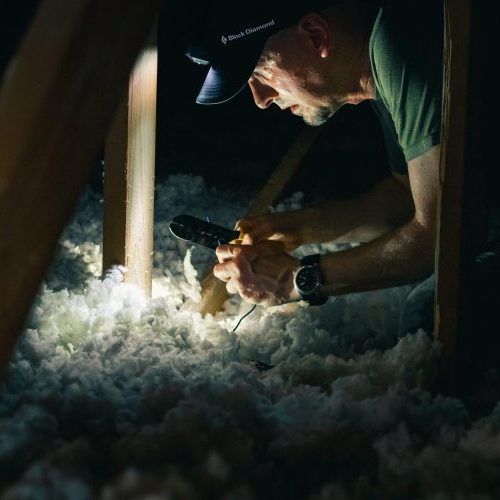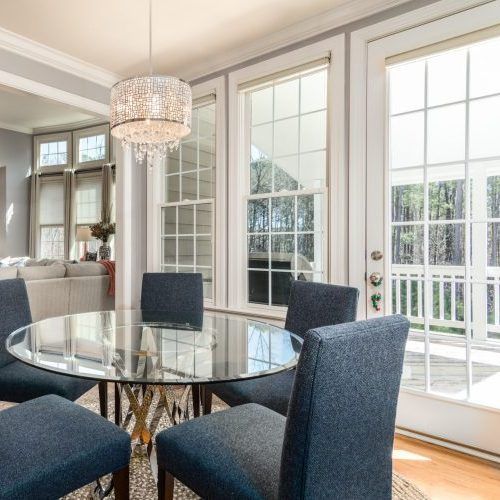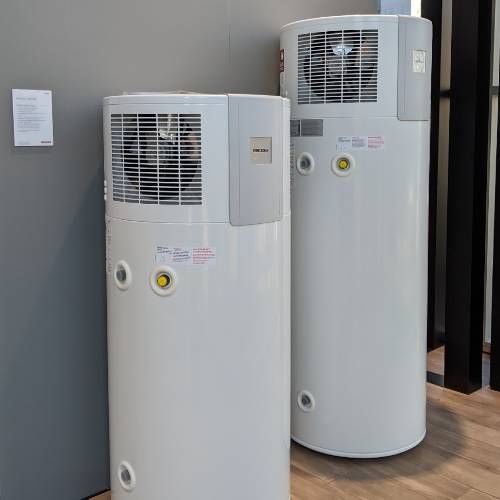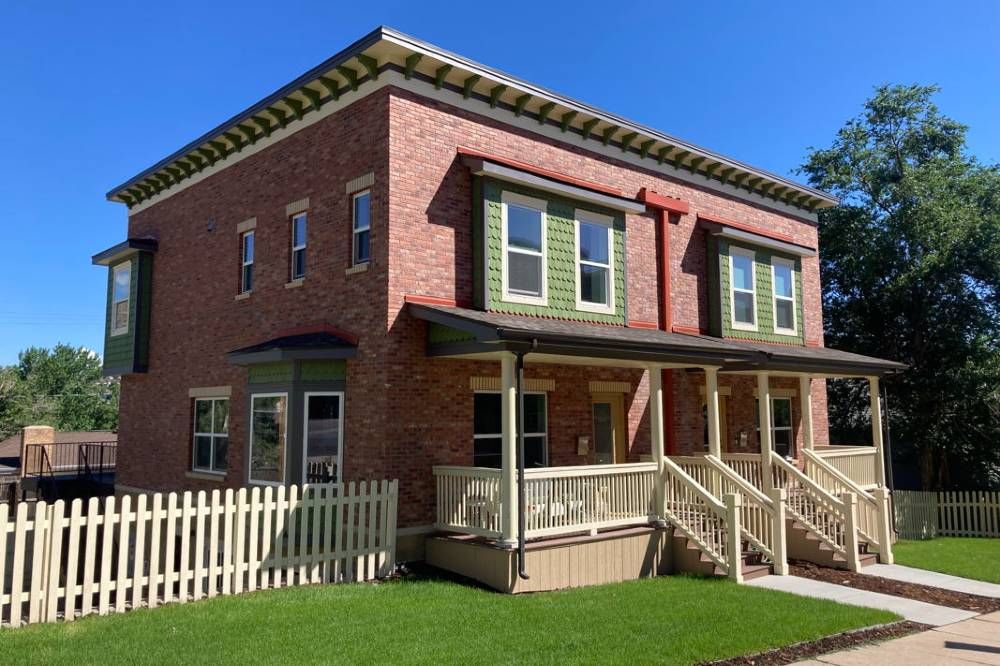The design and construction of your home will affect the health and comfort of your family, as well as your home’s energy consumption and carbon footprint. The key aspects of a Healthy, Efficient, and Electric home are described below. Incorporating these elements into your new home will result in these benefits:
-
Improved health and indoor air quality
-
Reduced energy costs
-
Excellent comfort and low noise
-
Minimal carbon footprint
Health & Indoor Air Quality
There are three main design elements of a new home that contribute to superior health and indoor air quality benefits:

Electric Cooking
Cooking with electricity eliminates the combustion by-products and other pollutants from cooking with gas or propane. Induction cooktops cost slightly more but offer superior cooking performance to gas cooking, as well as better air quality.

Choosing low-VOC furniture and carpeting
Many furniture and carpeting products emit volatile organic compounds – chemicals that can be bad for your health and which can easily be avoided by choosing low-VOC products.

Heat recovery ventilation (HRV)
With a well-sealed home (discussed below under energy efficiency), mechanical ventilation (i.e., fans and ducts) is necessary to provide healthy indoor air quality. Heat recovery ventilation systems achieve this goal with superior energy efficiency and significantly reduced energy costs. You can learn more about HRV systems here.
Energy Efficient Construction
Energy efficiency contributes to improved comfort – from reduced drafts and reduced noise from mechanical equipment. In addition, energy efficiency helps reduce energy costs and carbon emissions. In addition to choosing efficient electric space and water heating systems (described below), there are three main elements that contribute to improved energy efficiency of your new home:

Increased and properly installed insulation
Installing more insulation reduces energy losses, helping keep the home comfortable and reducing energy costs in both winter and summer. This includes sealing and insulating ducts installed in unconditioned spaces (crawl spaces and attics).

Reduced air infiltration
Reduced infiltration also helps improve comfort while reducing energy waste, and is accomplished with well-sealed windows and doors, minimizing penetrations in walls and ceilings, and reducing air movement in framing. With a well-sealed home, we also recommend Heat Recovery Ventilation (discussed above under Health and indoor air quality).

High-performance windows
Windows perform many functions: they let in natural light and views, bring in fresh air when opened, and eliminate unwanted drafts and temperature swings when they are closed. Choosing the number of windows and choosing high-performance windows are important parts of your home’s energy design. Triple-pane windows reduce heat loss or gain through the window and increase the surface temperature of the inner pane (in winter), which improves comfort.
A note about building code requirements and Energy Star certified homes: A number of Colorado cities and counties have adopted the most recent (2021) International Energy Conservation Code (IECC), which has very good energy efficiency requirements. If your new home is in one of these locations , then you can be confident about your home achieving the above three elements. (Here is a current list of Colorado local building codes.) If your home is not in one of these locations, then we suggest you consider choosing a team (architect, energy rater, and builder) that will help the home achieve ENERGY STAR New Home certification, which will ensure that the home is at least 10% more efficient than the applicable local code requirements. You can learn more about Energy Star’s new home certification program here.
Electric Space & Water Heating
Efficient heat pump systems for space and water heating will keep your home comfortable with minimal carbon emissions and no risk of carbon monoxide poisoning.

Heat pump system for heating and cooling
Installing an efficient heat pump system will keep your home comfortable year-round, while minimizing carbon emissions. There are ground-source or air source systems, and there are ducted or ductless options, or combinations of the above.

Heat pump water heater
A heat pump water heater will meet your hot water needs with very low energy costs and carbon footprint.
Low Carbon Emissions
In addition to using efficient electric space and water heating, the main ways you can reduce your climate pollution are installing solar PV panels and electric vehicle (EV) charging, for a current or future EV.

Solar PV
Designing your home for good southern or western roof exposure will maximize the output of a rooftop solar PV system and will help reduce energy bills and minimize the home’s carbon emissions.

EV Charging
Adding EV charging capabilities to your new home is easy and inexpensive. An EV will save you money on fuel and maintenance costs, while minimizing your transportation carbon emissions. In addition, if you are considering buying an EV, it may qualify for federal and state tax credits of up to $10,000.
Fire Resilience
In addition to the aspects described above, another important aspect to consider is your home’s resilience to future wildfires, which are an increasing threat to Colorado homes in many locations. You can learn more about the key elements of fire resiliency here.
Case Studies

Custom Home in Golden
Mike Ambrose used to live in a historic home in downtown Golden that was built in 1874 and was horribly inefficient. But Mike saw that some older houses in the area were equipped for solar, and something clicked for him. Eventually, Mike was offered an opportunity to buy the lot across from his old house, which he purchased in 2012 and began planning his new home. Mike worked with well-known h…
Building Your Own Home
Here is some guidance on building your team of professionals to help you design and build your own healthy, efficient, and electric home.
And here is a partial list of Colorado architects, builders and other professionals who can help you.
Here is another partial listing: Colorado Green Building Guild (CGBG) Directory
Resources for Homebuyers
How to Find a New All-Electric or High-Performing Home
All-Electric New Homes
Here is a partial list of developments of efficient, electric new homes which may have homes/units available. We will add new developments to this section as they become available.
-
L’Avenir Townhome-Style Condos, Fort Collins
-
Revive Properties, Fort Collins
-
Geos Neighborhood, Arvada
-
Thrive Home Builders (several Front Range locations)
-
Pure Zero Construction, Pueblo
-
Basalt Vista, Basalt
-
Montava, Fort Collins (homes still under development)
Pearl-Certified Homes
An alternative to buying an all-electric new home is to buy a “high-performing” home, such as one with a Pearl Certification. Pearl Certifies homes at the silver, gold, and platinum levels. The main features are the same as those described above: energy efficiency, excellent comfort and indoor air quality, low fossil fuel use for space heating and hot water, and low carbon emissions. You can find homes for sale in your desired location that are Pearl-Certified here.
All-Electric Homes for Rent
There is one new development so far that features a sustainable, maintenance-free lifestyle and all-electric homes for rent. We will add any new developments like this as they become available.
Cottages at Erie Commons, Erie
Examples of All-Electric New Homes
This recent report from SWEEP highlights several examples of all-electric homes in Colorado – small developments and custom homes, with more details in the Appendix.
Tax Credits and Rebates for Homebuyers
This presentation explains all the rebates and tax credits for homebuyers for purchasing all-electric new homes (or dual-fuel homes with heat pumps and heat pump water heaters).
Common Questions
Are there any developments where I can buy an all-electric new home?
Yes, see the Resources for homebuyers section below. There are several developments with all-electric homes under construction that are for sale. Another option is to hire an architect and builder to build your own custom all-electric home, and we provide a list of architects and builders of efficient and electric homes below.
Is a dual-fuel more resilient in the case of power outages, compared to an all-electric home?
No. Without electricity, the gas furnace will not operate. On the other hand, homes in the fire-damaged Marshall fire neighborhoods discovered that gas service was disconnected and remained out for a much longer period of time than the electricity outage. With an all-electric home, the home will be able to remain comfortable without any need for the gas service.
Will my annual energy costs be lower than for a similar dual-fuel home?
An all-electric home’s energy costs will be slightly lower or the same as a dual fuel home. Natural gas prices are likely to remain relatively high compared to the previous five years. SWEEP’s analysis shows that with 2021 gas prices, the costs of operating an efficient heat pump and heat pump water heater will be about 5-10% more than those of their gas counterparts, but this slightly increased cost is off-set because the all electric home will have no monthly gas fixed charges.
Will a new all-electric home have better air quality and lower risks from carbon monoxide?
Yes, recent studies show that gas stoves emit a variety of unhealthy pollutants, including nitrogen oxides, carbon monoxide, and formaldehyde. These pollutants are eliminated by replacing the gas stove with an electric one. In addition, by replacing the gas furnace and water heater with electric heat pump space and water heating, there are no open flames that could emit carbon monoxide into the home.
Will a new all-electric home cost more than a similar dual-fuel home?
Based on our conversations with several builders of all-electric homes, the home may cost slightly more to build than a similar dual-fuel home, for example about $10,000 more for an average size new home (including more efficient building shell and electric heating and appliances). However, some Colorado utilities are increasing their rebates to builders for all-electric homes, which will offset part of this additional cost.
The cost to the homebuyer for the all-electric home will be very close to the cost of a similar dual-fuel home. (For example, if the cost is $20,000 more, that is less than 4% of the total cost if the new home costs more than $500,000.) And, beginning in 2023, the homebuyer can take advantage of tax credits for a heat pump or heat pump water heater: 30% up to $2,000 for the federal tax credit, and 10% of the equipment cost for the state tax credit. These tax credits will help to further offset the small cost difference for the electric home.



